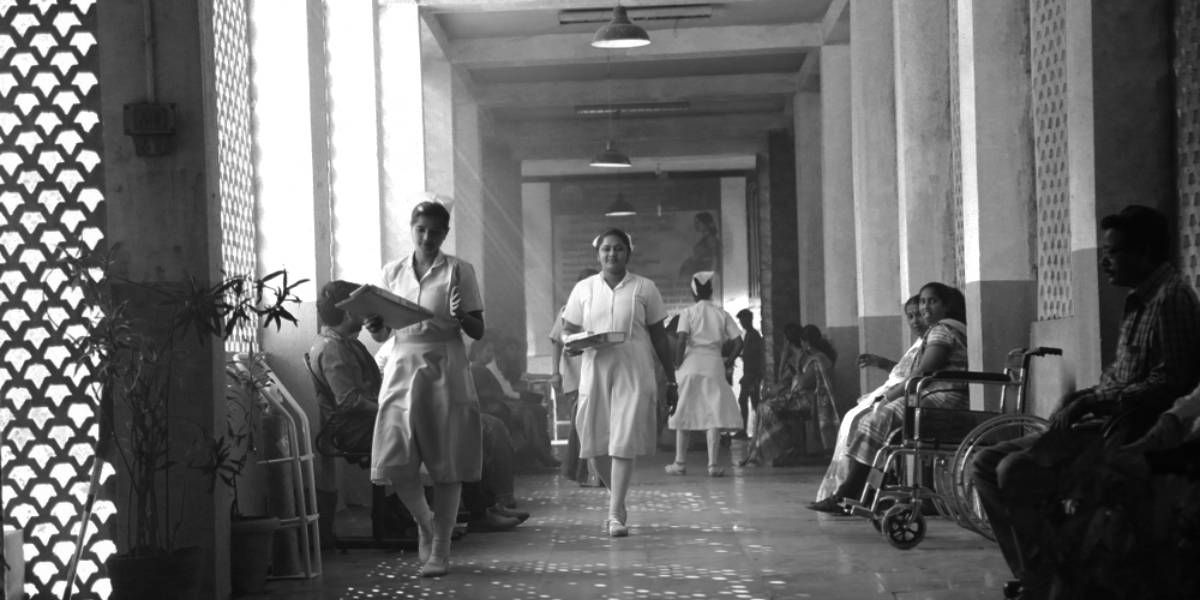Nirmala Sitharaman said the government will ‘encourage’ vaccination for girls in the 9-14 year age group for the prevention of cervical cancer.

In 2023-24, the government initially had put the budget estimate of Rs 88,956 but the revised budget was 79,221, a decrease of Rs 9,735(10.9%). (Shutterstock)
Union Finance Minister Nirmala Sitharaman unveiled a robust health Budget for the fiscal year 2024-25, allocating ₹90,171 crore — an impressive 13.82 percent surge from the previous year’s revised Budget — on Thursday, 1 February.
In 2023-24, the initial Budget estimate was ₹88,956 crore, but the revised Budget witnessed a reduction to ₹79,221 crore, marking a decrease of ₹9,735 crore (10.9 percent).
The total outlay for the Budget stood at ₹47.65 lakh crore, with the government earmarking 1.8 percent for health, falling short of the World Health Organisation’s recommended 2.5 percent of GDP expenditure on healthcare.
“The increase in health outlay is good but still too far from the demanded 2.5 percent of the GDP. We are one of the major economies with the lowest government spend on health and with highest out-of-pocket expenses,” Infection Control Academy of India President and honorary University of Hyderabad Professor Ranga Reddy Burri told South First.
Presenting the interim Budget, Sitharaman outlined plans to establish additional medical colleges, utilising existing hospital infrastructure, and proposed the formation of a committee to look into it and make recommendations.
She highlighted the consolidation of various maternal and child healthcare schemes into a comprehensive programme for streamlined implementation.
“Several youths are ambitious to get qualified as doctors. They aim to serve our people through improved healthcare services. Our government plans to set up more medical colleges by utilising the existing hospital infrastructure under various departments. A committee for this purpose will be set up to examine the issues and make relevant recommendations,” Sitharaman said.
“India already has enough number of colleges and the undergraduate seats (approx 1.25 lakh intake annually), and even without Ayush, Homoeo, Unani and other stream doctors we already are in line with doctor to population ratio,” Reddy said.
“What we need now is to move from quantity to quality. We need to improve infrastructure, teaching staff and other amenities at already established colleges so we can expect well-trained new doctors added to improve the overall health and wellness of the population in its true sense (as defined by WHO),” he added.
The finance minister disclosed the expedited nationwide rollout of the newly designed U-WIN platform for immunisation management and intensified efforts under Mission Indradhanush.
“Upgradation of Anganwadi centres under Saksham Anganwadi and Poshan 2.0 will be expedited for improved nutrition delivery, early childhood care, and development,” she stated.
“The healthcare cover under the Ayushman Bharat will be extended to all ASHA workers, Anganwadi workers and helpers,” the minister said.
The minister also said that the government would ‘encourage’ vaccination for girls in the 9-14 year age group for the prevention of cervical cancer.
Earlier, it was announced that the government itself would roll out human papillomavirus (HPV) vaccination campaigns in the second quarter of 2024 but on 13 January, the Union Ministry of Health and Family Welfare denied having any such plans.
The use of the term ‘encourage’, led to confusion. It was not clear if the government would directly launch the vaccination initiative, or just ask the citizens, i.e. 9-14-year-old girls, to get vaccinated.
“Focus on HPV is much needed. We need to address other vaccine-preventable diseases also,” Reddy said.
The Union government has increased the Budget of Pradhan Mantri Swasthya Suraksha Yojana from ₹1,900 crore to ₹2,400 crore for 2024-25.
Similarly, the government increased the allocation for the National AIDS and STD Control Programme from ₹2,420 crore to ₹3,049 crore. The government has increased the Budget of Ayushman Bharat- Pradhan Mantri Jan Arogya Yojana (PMJAY) from ₹6,881 to ₹7,500.
The government slashed the allocation for medical treatment of CGHS pensioners from ₹4,296.40 crores to ₹4,200 crores.
The budgetary allocation for the Pradhan Mantri Ayushman Bharat Health Infrastructure Mission (PMABHIM), which develops the infrastructure of primary and secondary healthcare centres, has been increased almost twofold. The Budget has been increased from ₹2,100 crore to ₹4,107 crore.
Also, the government has proposed an allocation of ₹3,001.73, only 3.3 percent of the total health budget for the Department of Health Research, which overlooks the Indian Council of Medical Research along with the research at medical colleges such as at AIIMS.
Meanwhile, when antimicrobial resistance was turning out to be a silent pandemic, the government announced the establishment and strengthening of NCDC branches and health initiatives inter-sectoral coordination for preparation and control of zoonotic diseases and other neglected tropical diseases surveillance of viral Hepatitis antimicrobial resistance with a mere ₹52 crore.
The previous Budget had earmarked ₹55 crore but the government later revised it to ₹27.52 crore.
“What really dampening is abysmal allocation to AMR which is top 10 global health threats and almost every country is gearing up to deal with this issue with One Health approach. India during its G20 presidency committed to prioritise actions to contain AMR but the proclamation is not reflected in the action (budget allocation),” said Reddy.

Apr 24, 2024

Apr 23, 2024

Apr 13, 2024

Apr 08, 2024

Apr 07, 2024

Apr 07, 2024